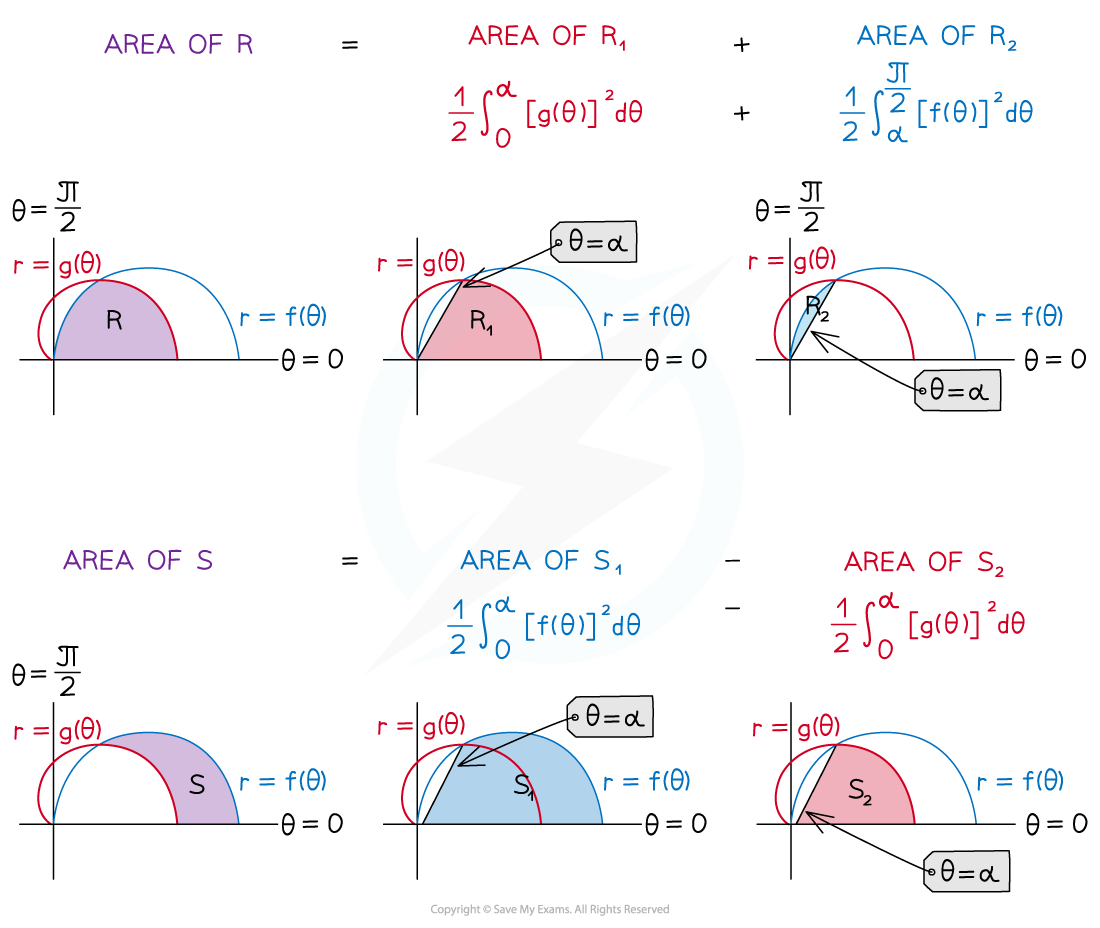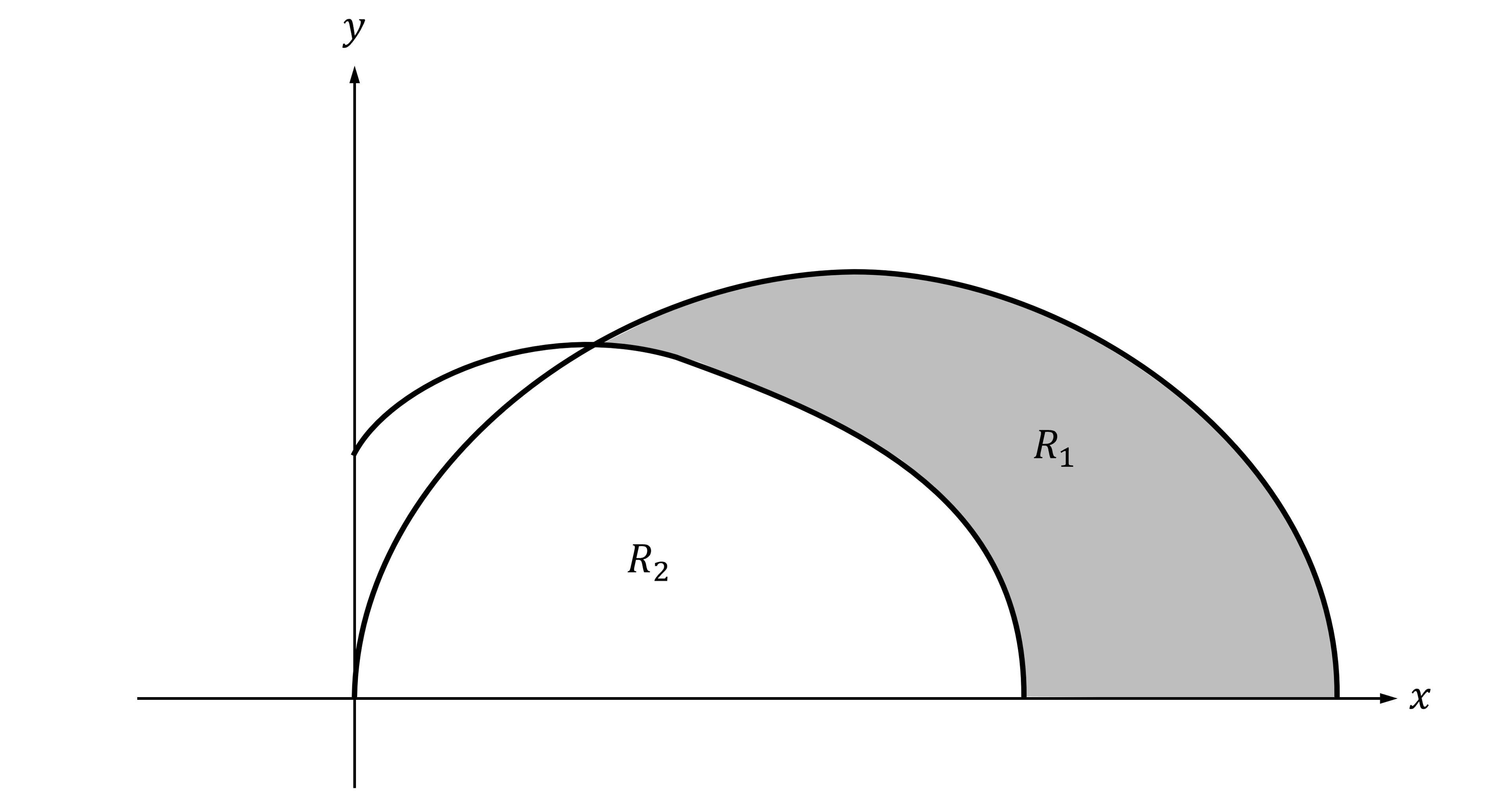Areas between Two Polar Curves (College Board AP® Calculus BC): Study Guide
Areas between two polar curves
How do I find an area between two polar curves?
To find an area between two polar curves,
and
:
Sketch the two curves
Find the angle(s) of intersection,
by solving
Draw a ray in the direction of
on your diagram
This is a straight line from the pole to the point of intersection
Split the area into either a sum or difference of two polar areas, for example:
Region R shown below is a sum
Region S shown below is difference
Use the area formula
to find each area

Examiner Tips and Tricks
If one of the polar areas is part of a circle, e.g. the circle , then it can be quicker to use the formula for the area of a circle,
.
Worked Example
A sketch of the polar curves and
where
is shown below.
The shaded region is labeled and an unshaded region is labeled
.

(a) Find the area of , leaving your answer as a single integral.
When ,
is
and
is
, so
is the larger curve
Find the angle at which the two curves intersect by setting equal to
and solving
Draw the ray on the diagram to see how to form the area
It is the difference between the two polar areas shown below

Use the formula to work out the two individual areas, then subtract the smaller area from the larger area
The limits of the integrals are the same, so the integrals can be joined to form one single integral (as requested by the question)
(b) Find the area of .
is the sum of the two polar areas shown below
gives the part of the area from
to the point of intersection
gives the part of the area from the point of intersection to
(where
), which is the end of the range given in the question

Use the formula to work out the two individual areas, then add them together
Evaluate the integrals above on your calculator

Unlock more, it's free!
Did this page help you?